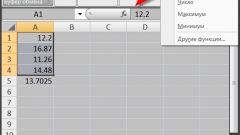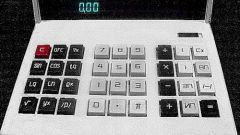Instruction
1
Put all the numbers of the original sequence, and then divide them by the total number of numbers to get the average arithmetic value. If the task has an applied character, the result may need rounding to get the answer in the form of "half digger".
2
If such a computation is ad-hoc, and the numbers in the source sequence is not much, for the practical calculation of the values you can use the calculator built into Google search or Nigma. Specify and enter the required mathematical operation in the search query box of the system. For example, if you need to find the average number of goals conceded by CSKA in their last five games, enter the query: "(0+1+2+1+1)/5". The search result will show without you click send request.
3
If the sequence numbers are not so small, it is better to use the tabular editor such as Microsoft Office Excel. Editor, you will be given a table to fill in values for the original sequence of numbers. This can be done entering the numbers manually, but if it is possible to copy and paste the numeric sequence in the text format, it will be much easier. In this case, preferably by using any text editor before copying replace all delimiters between values of a sequence to characters of a string - then after pasting into Excel, the values will line up in the column. If instead of end-of-string use the tab character, they will line up in a row.
4
Select the column (or row) that contains the entered values by clicking on its header. The arithmetic mean can be seen in the table below in the status bar.
5
If you only know this value is not enough, then use the formula to calculate the average. To do this, click the cell where you want to see the result, open the drop-down list on the button with the pictogramme the Greek letter Sigma Σ in the section "Edit". Select the list item 'Average', and then select the filled range of table cells and press Enter. Excel will calculate and display the average value.










